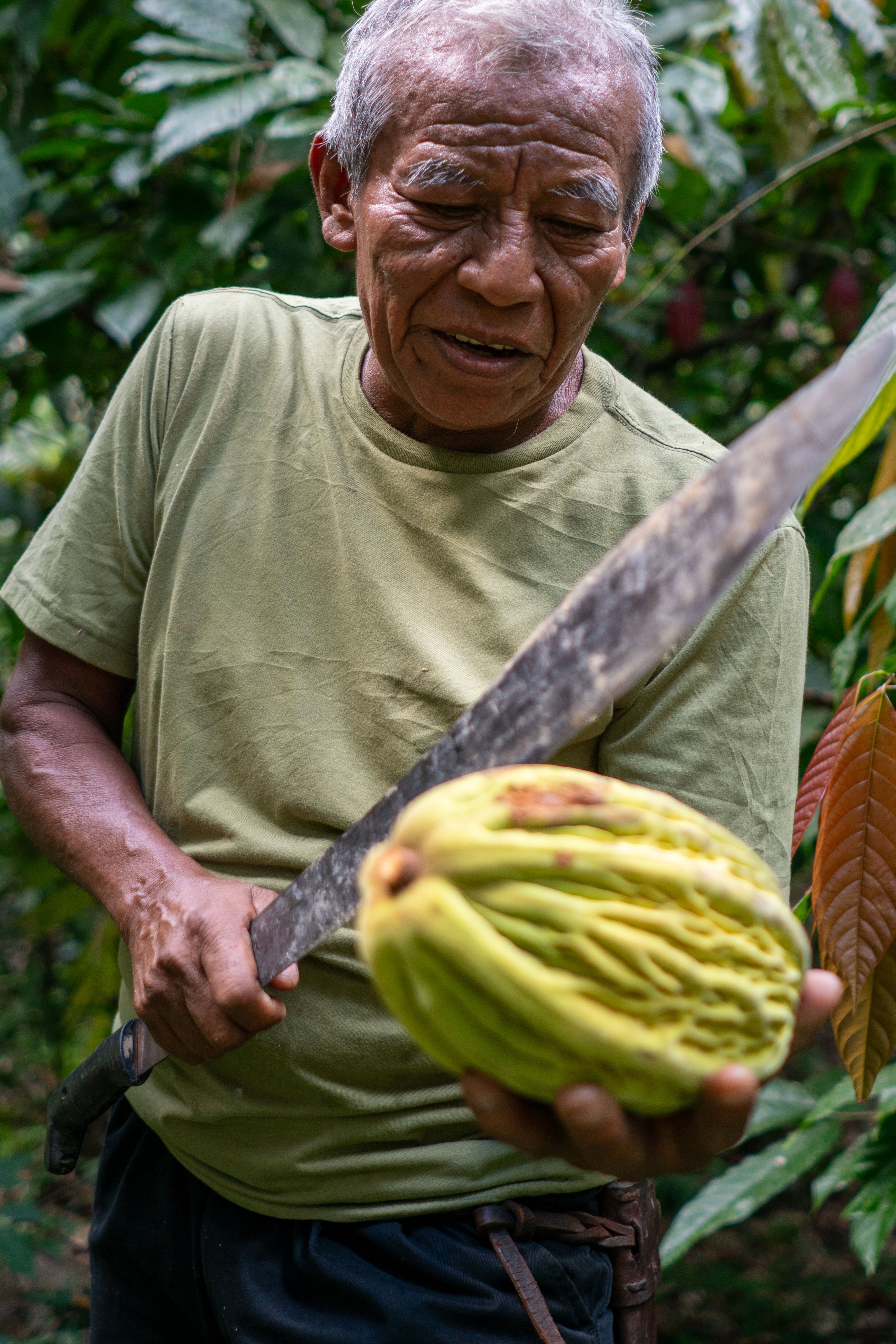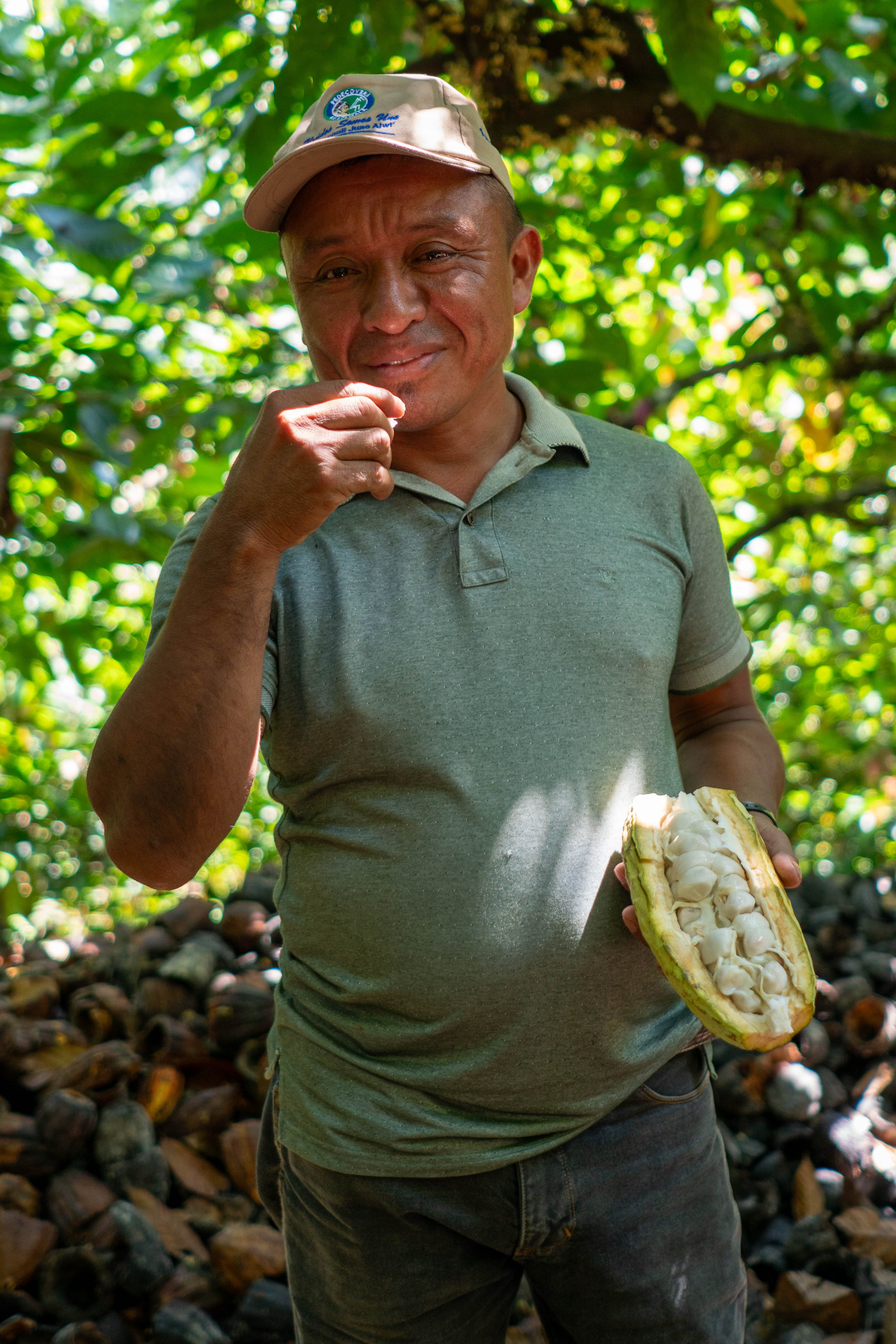
Farming Standards
Cacao is part of a living ecosystem. The way it’s grown shapes not only the flavor of the chocolate we make, but the long-term health of the land and the future of the people who depend on it. Terms like “sustainable” and “environmentally responsible” get used a lot – but we think it’s important to define what they look like in practice. These are the three priorities we return to when deciding who we source from. They reflect the kind of environmental impact we want to make – and that we hope our customers feel connected to, all the way to the source.
Priority 1: Buy Cacao Grown in Living Forests
Cacao was born in the jungle basins of the Amazon – one of the most biodiverse ecosystems on Earth. You can still find wild cacao trees growing in Central and South America. Cacao thrives under a canopy of taller trees, surrounded by moisture-rich soil and the mulch of its own leaves, and a tangle of diversity in every shade of green.
This is the kind of landscape we look for when sourcing cacao: farms that function like forests. This is known as agroforestry – a way of farming that mirrors the structure and function of a natural forest, with cacao grown alongside layers of trees, fruits, spices, and other crops. Good agroforestry supports biodiversity, restores soil health, and helps farmers build climate resilience without relying on extractive methods. Every farm is different – shaped by its own soil, slope, and seasonal rhythms – but these sustainable farms follow a core truth: trees keep the land alive.
Most of the cacao we source is grown by smallholder families on 2–10 acre plots, where cacao is part of a balanced system. Farmers plant native shade trees like Madre de Cacao to protect young cacao saplings from sun and wind while fixing nitrogen in the soil. Its branches, when pruned, become fuelwood for toasting beans over a fire as part of traditional cacao drink-making. Other crops – like banana, citrus, legumes, spices, and native hardwoods – serve a range of functions: they nourish the soil, feed pollinators, offer food and fuel, and diversify farmers incomes between cacao harvests. These farms often double as habitat corridors, too – connecting fragmented forests and giving birds, insects, and other animals a place to return.
Cacao grows best in company. These agroforestry systems reflect that – protecting not just the crop, but the entire landscape it depends on. Healthy land means healthy cacao, year after year. And for many of the people we work with, that’s the goal: to farm in a way that makes it possible to stay on their land and thrive, generation to generation.
---
Pictured below: A creek winds through Eladio Pop's farm in Southern Belize ||| Lauren explores the under-canopy of an agroforesty operation in Guatemala ||| Looking down at forest-covered hills near the town of Cohoban in Guatemala
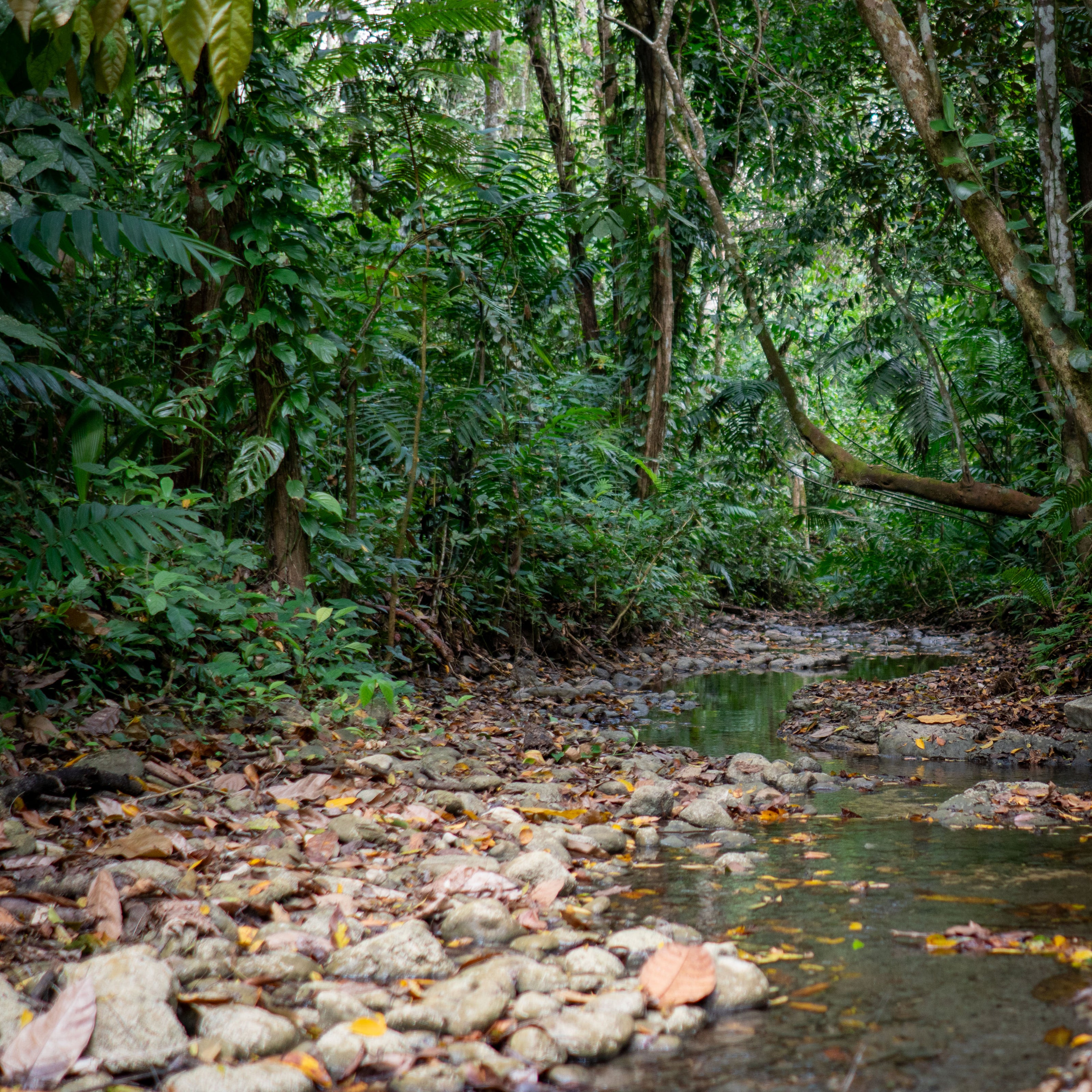
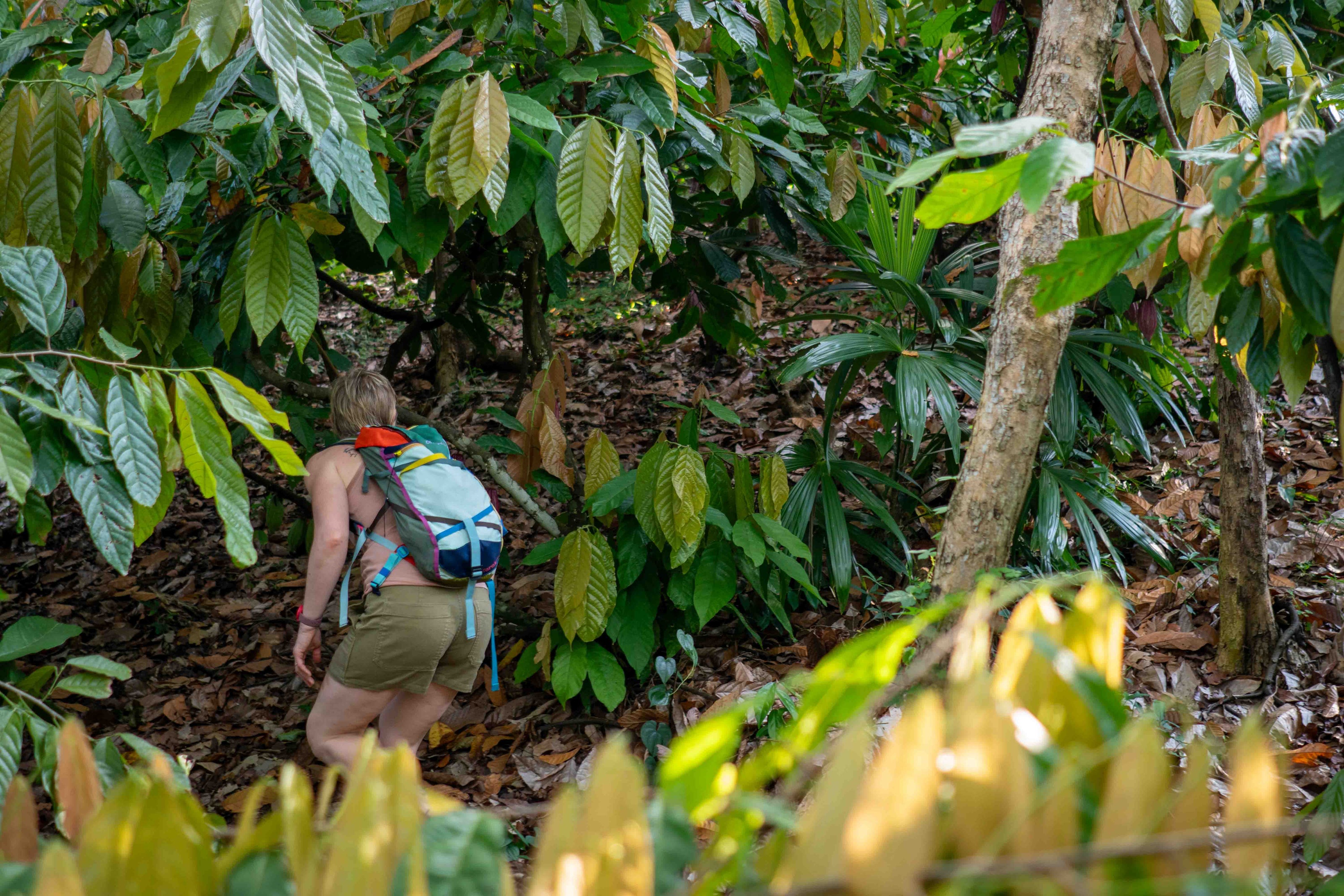

Priority 2: Buy from farmers who practice organic farming
We prioritize cacao grown using organic and low-impact farming practices. That means no synthetic pesticides, herbicides, or chemical fertilizers – just natural compost and fertilizers, shade-based nutrient cycling, and traditional techniques that work with the land instead of against it.
Organic practices reduce chemical runoff into rivers and streams, helping protect drinking water, fish habitats, and fragile watershed ecosystems. They preserve microbial life in the soil, which supports long-term fertility and helps trees stay healthy without heavy intervention. And they protect farmer health – eliminating exposure to toxic sprays and chemical residues that are common in conventional systems.
For many smallholder farmers, chemical inputs aren’t just harmful – they’re also unaffordable. Composting, pruning, and intercropping with legumes offer lower-cost, lower-impact ways to strengthen soil and reduce pests.
We work with cooperatives and fermentarias that support their farmers in transitioning to and maintaining organic systems. They help make organic farming practices and certifications accessible and achievable, even for small farms with limited resources. In fact, small family-run farms are often more likely to farm organically by default. Chemical inputs are expensive, so farmers use what’s on hand – leaf mulch, composted husks, living groundcovers, and traditional techniques that nourish the land without harming it.
Cacao grows better in soil that’s alive. Organic farming keeps it that way – protecting the land, the water, and the people who depend on both.
Plus, if you like knowing what’s in your food, organic cacao is an easy yes!
---
Pictured below: A trail winds through Eladio Pop's cacao farm in Southern Belize ||| Eladio Pop teaches Lauren about organic farmin in Southern Belize ||| A bright-red cacao pod grows in Izabel, Guatemala |||
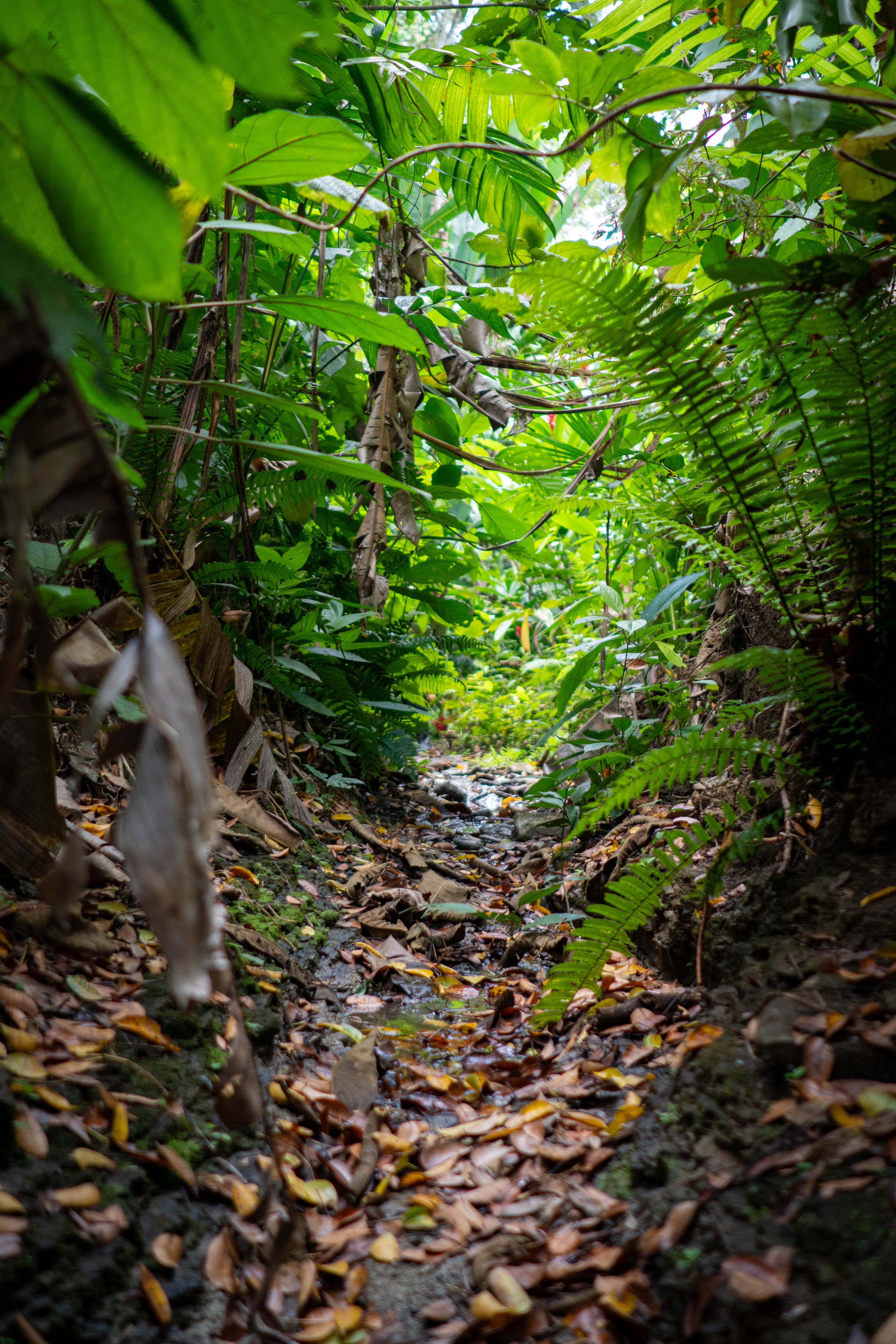
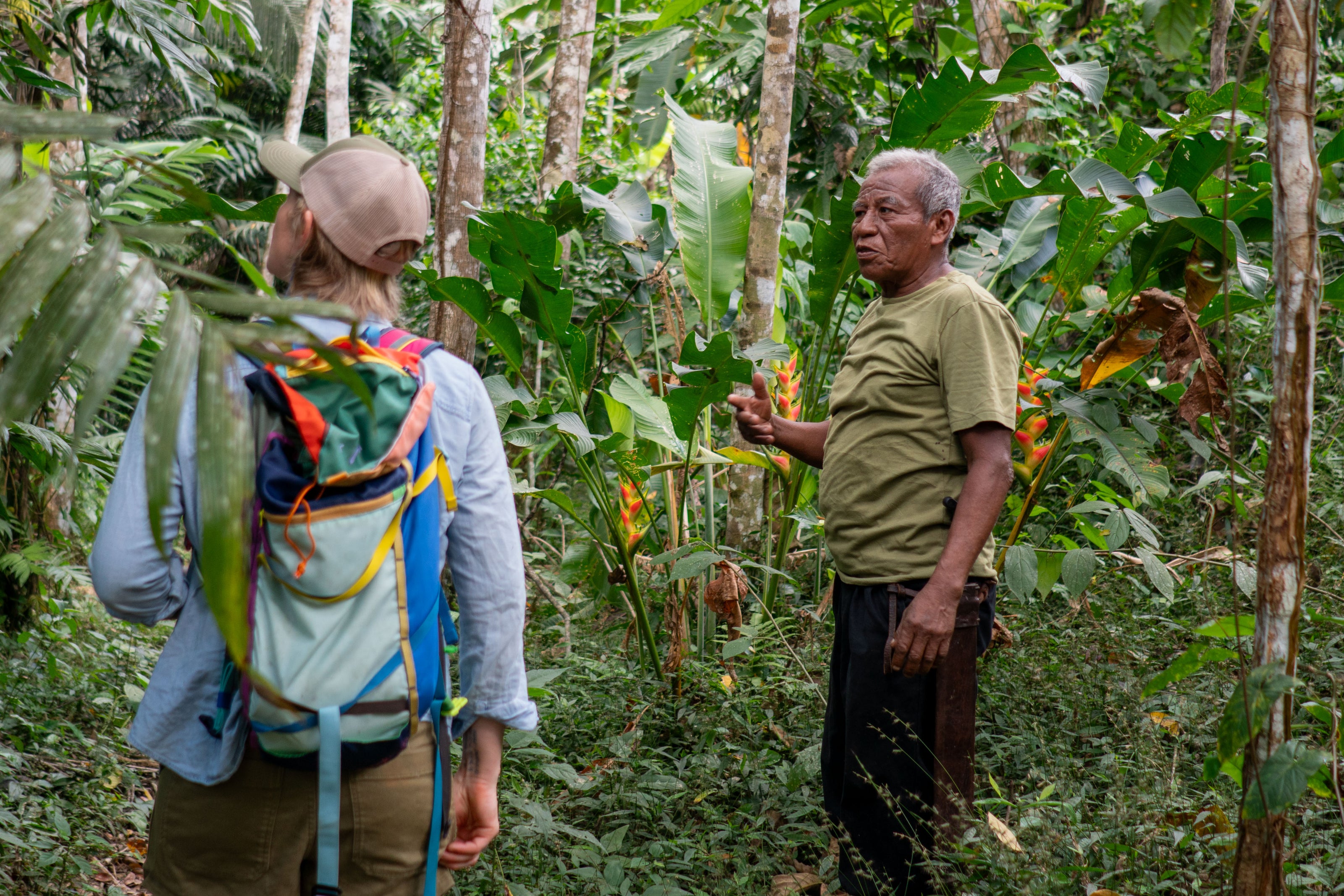
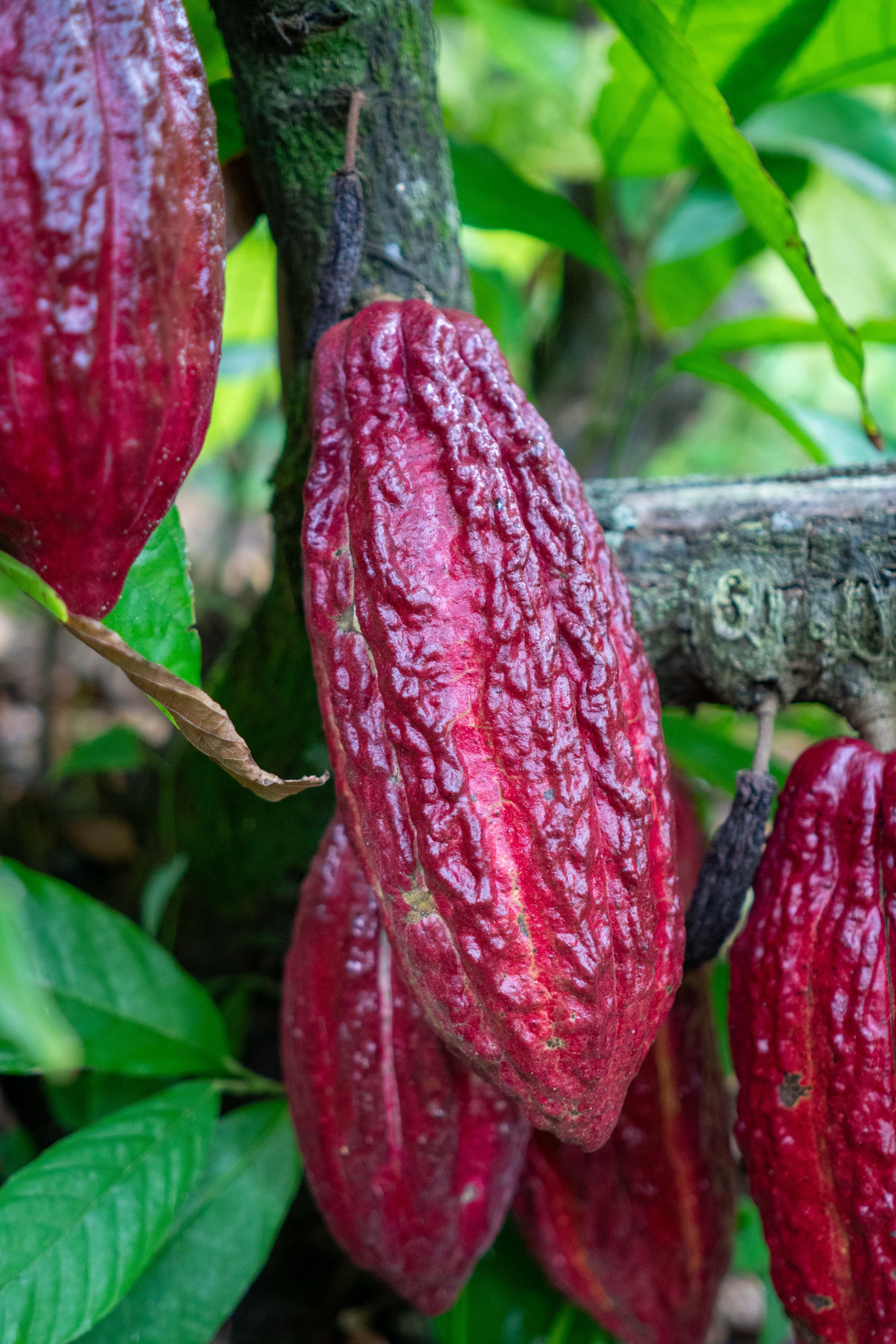
Priority 3: Buy from farmers who are building a better future
The knowledge of how to grow cacao in relationship with the forest didn’t begin with sustainability consultants or NGOs – it’s been practiced for thousands of years by Indigenous communities throughout Mesoamerica.
Long before the term existed, Maya farmers cultivated cacao in food forest systems – layered, multi-canopy landscapes that blended fruit trees, cacao, medicinal plants, and hardwoods. Their farming mirrored the forest because it was the forest, maintained through intergenerational care and a deep ethic of coexistence.
But cacao entered global markets under colonization, forests were cleared and monoculture took root. In many places, this extractive model still exists – cacao destined only for the commodity cocoa markets, grown for yield alone, with little space for biodiversity or long-term soil health.
But the knowledge of how to grow in relationship with land lives on. Lots of smallholder farmers today are revitalizing these forest-based systems, drawing on ancestral practices while adapting to modern climate and economic realities. Many farms that we work with are replanting native trees in areas that were clear-cut decades ago. Sustainable agroforestry is not industrial monoculture with a few trees thrown in – it’s a regenerative approach that rebuilds ecosystems.
We work with origins committed to long-term land health. Regenerative cacao farming means restoring soil microbiomes, replanting native trees, restoring riparian zones, and supporting biodiversity. It leaves the land healthier with every harvest – and more resilient to climate stress, erosion, and ecological loss.
Our sourcing partners – fermentarias and cooperatives – help make this work possible. They provide seedling programs for resilient and heirloom cacao species, composting and pruning tools, technical guidance, long-term planning support, and agroforestry training. They can also help farmers access professional resources like soil testing and surveying, and pathways to regenerative certification when farms are ready. Just as importantly, they connect smallholder farmers to markets and buyers like us – offering fair pricing for the literal fruits of their labor.
This combination of shared infrastructure, knowledge, access, and support helps farmers move beyond short-term survival and invest in long-term resilience. It allows families farming just a few acres to care for their land, build steady livelihoods, and pass down farms to the next generation that are not only viable – but thriving.
A farmer we spent time with shared an idea we’ve carried with us since: paradise isn’t lost, or something out there waiting to be found. Paradise is something you cultivate.
---
Pictured below: Eladio Pop cuts open a jaguar cacao pod (theobroma bicolor) which is a close relative to the cacao used for chocolate (theobrama cacao) ||| Lauren stands with the team at FEDECOVERA in their fermenteria ||| A new cacao flower grows on a tree in Southen Belize
